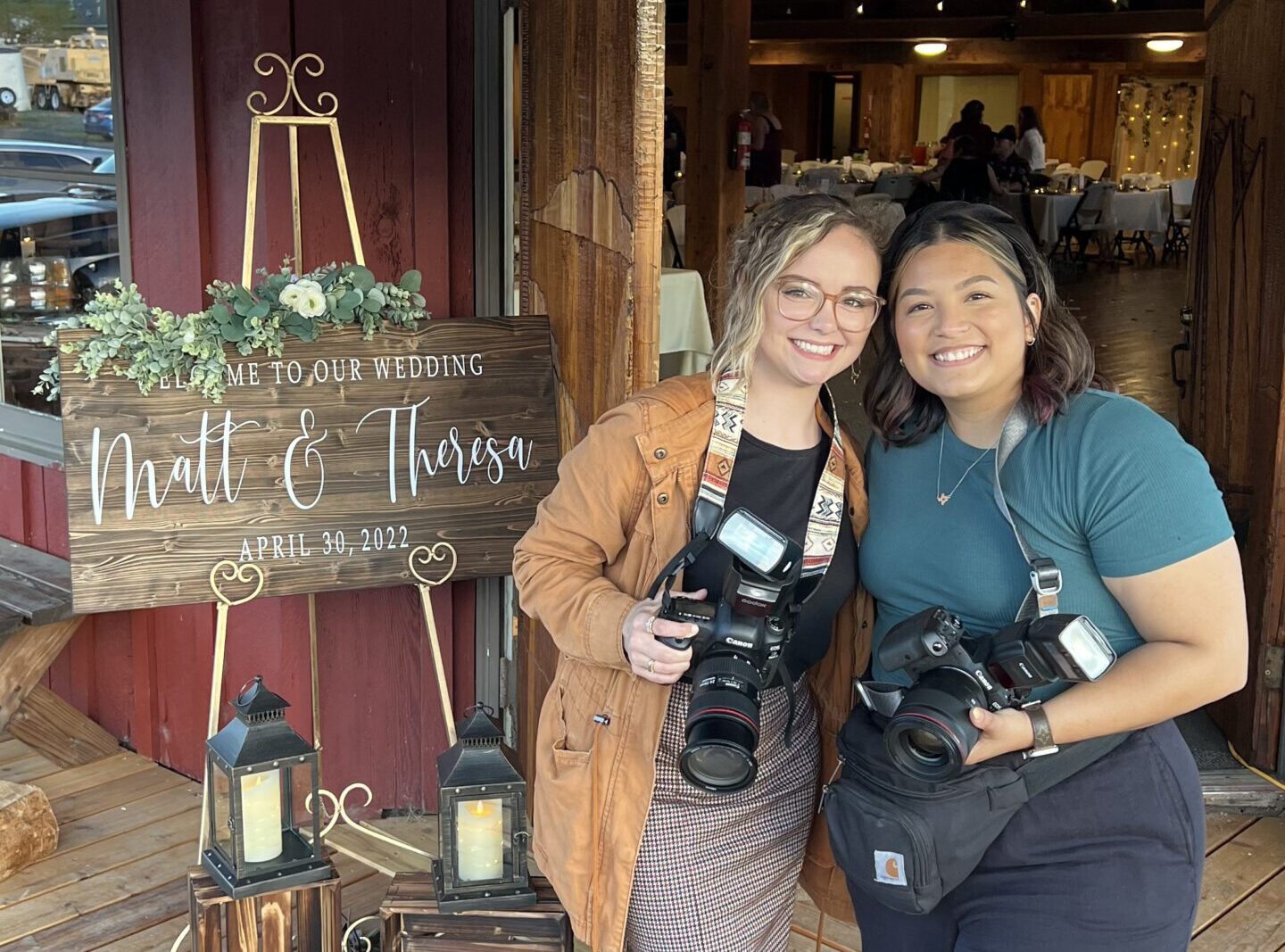
How to Become a Second Shooter and Why It’s the Best Way to Start in Wedding Photography
Meet Angie
Filed in:
Date:
Author:
Angelica Richardson
October 9, 2025
If you’ve been dreaming about getting into wedding photography but aren’t sure where to start, becoming a second shooter is hands-down one of the best ways to learn. It’s how so many of us (myself included!) first gained experience, confidence, and an inside look at what it really takes to capture a wedding day beautifully and smoothly.
As a wedding photographer based in San Antonio, Texas, I’ve worked with many second shooters over the years — and I love helping new photographers grow. Here’s my guide on how to get started, what to expect, and how to make a great impression so you keep getting invited back.
1. Understand the Role of a Second Shooter
A second shooter is there to support the lead photographer and help tell the full story of the wedding day.
You might:
- Photograph the groom’s details and getting-ready moments while I’m with the bride.
- Capture the guests’ reactions during the ceremony.
- Get wide venue shots, décor, and in-between moments.
- Assist with lighting, organizing family photos, or gear.
The key is teamwork — you’re not just taking photos; you’re helping create a seamless experience for the couple.
2. Build a Simple Portfolio
Even if you’re new, having a small portfolio shows that you’re serious about photography.
You can start by photographing:
- Styled shoots or practice sessions with friends.
- Couples or families outdoors to practice lighting and posing.
- Small local events or elopements.
Edit your favorite 10–15 images in a consistent style and create a small website or Instagram page. Don’t worry about being perfect — authenticity and effort go a long way.
3. Reach Out to Local Photographers
Once you have a few solid images, reach out to photographers you admire (yes, even the ones who seem “too busy” — we notice genuine messages!).
When you message them, be short and professional:
- Introduce yourself (name + location).
- Mention that you’d love to second shoot or assist to gain more experience.
- Share a link to your portfolio and what gear you shoot with.
And please — be kind, reliable, and positive. Photographers remember second shooters who are easy to work with way more than those who just talk about gear.
4. Learn How a Wedding Day Flows
Weddings move fast. Knowing the rhythm of the day helps you anticipate what’s coming next.
Pay attention to:
- Ceremony restrictions (no flash, where you can stand, etc.).
- How to communicate quietly with the lead shooter.
- Staying out of the main photographer’s frame.
If possible, shadow a photographer for a full day — even just to observe — before officially second shooting.
5. Know Your Gear and Be Prepared
You don’t need top-of-the-line equipment, but you do need to know your camera inside and out.
Have backups ready — extra batteries, cards, and flashes. Be comfortable shooting in manual mode, adjusting settings on the fly, and moving quickly between indoor and outdoor light.
If I ask for a specific focal length or angle, being able to adapt confidently makes a big difference.
6. Respect Boundaries (This One’s Huge)
After the wedding, most lead photographers will request your RAW files or memory cards. Do not post or edit images without permission — this is standard in the industry.
Always check before sharing or tagging the couple. Respecting boundaries builds trust and ensures we can keep working together.
7. Keep Learning and Building Relationships
Each wedding you second shoot will teach you something new — how to handle tricky lighting, how to manage timelines, and how to stay calm under pressure.
Ask for feedback after the event and thank the photographer for the opportunity. Gratitude and professionalism stand out more than you realize.
Final Thoughts from Angie
Becoming a second shooter is one of the smartest ways to step into wedding photography. You’ll learn the craft, build your portfolio, and make connections that can open real doors.
So pack your gear, show up with a great attitude, and soak up every moment. You never know — today’s second-shooter job could be the start of your full-time photography career.
✨ With love and encouragement,
– Angie Rich Photography
San Antonio Wedding Photographer
Mama, Military Wife and Professional Photographer of 10+ years in San Antonio, Texas.
Leave a Reply Cancel reply
Home
About
Weddings
elopements
couples
Family & Maternity
Blog
contact
Angie Rich Photography is a Texas wedding, elopement, and portrait photographer based in San Antonio. Now booking 2026